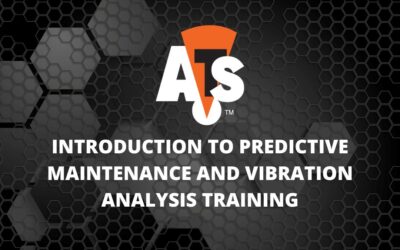This question from Jarrod, a maintenance engineer in the Marine industry:
Why do vibration analysts focus on being able to determine the specific fault frequency on rolling element bearings? Don’t we typically change the whole bearing and not just the defective part of it?
Brian:
That’s a good question, and my answer would be it is not typically needed as the bearing will usually be discarded and replaced as a whole unit, as mentioned in the question.
One thing that it does help with is determining the remaining lifespan of the bearing. If you are seeing a raceway defect, it is typically a slower failure curve with a long lead time prior to failure, allowing proper panning, scheduling and kitting to occur. If you see a cage defect frequency, it will deteriorate rapidly and when you see that develop you will want to make repair plans for the next possible outage.
Bob:
To add to Brian’s point, given the fact that bearings are used to hold a shaft in a particular position while still allow it to move (typically rotate) is a very specific manner, knowing the specific defect is crucial to determining how quickly the problem needs to be solved. When a rolling element (ball or roller) fails, it quicky damages other parts of the bearing, exacerbating the problem. Worse, though, is when the train cage fails. These failures develop very quickly. The train cage is used to maintain the internal special integrity of the bearing.
Consider the case where a cage fails and all of the rolling elements quickly migrate towards one side of the bearing. This leaves a huge gap in the opposite side, between the inner and outer raceway. The shaft is no longer constrained to its proper radial position and becomes free to literally “rattle around” which typically results in much more serious damage to internal components. I have seen plenty of cases where rapidly developing train cage failures have resulted in so much shaft movement that pump seals have failed and in a couple of cases pump impellers have “crashed” into bowl rendering the entire pump a total loss. My best advice when you see indications of a train cage failure in your condition monitoring data is to shut the machine down as soon as you can safely do so, before it goes totally catastrophic. I have always instructed technicians who collect vibration data with portable instruments that if they see a train cage defect indication in their data that they are to immediately stop collecting, get away from the machine as quickly as they safely can and start making notifications to Operations and Maintenance.
Ryan:
A vibration analyst tends to focus on being able to determine the bearing defect frequencies because it is one of the rare moments of indulgence that we can say with such high confidence that it’s a bad bearing. If the physical properties of the bearing is known, the defect frequencies can be calculated as a function of the shaft RPM. To paraphrase a famous lawyer in a high profile murder trial of a renowned NFL running back wife: “if the frequency matches… (And you can fill in the rest).






0 Comments